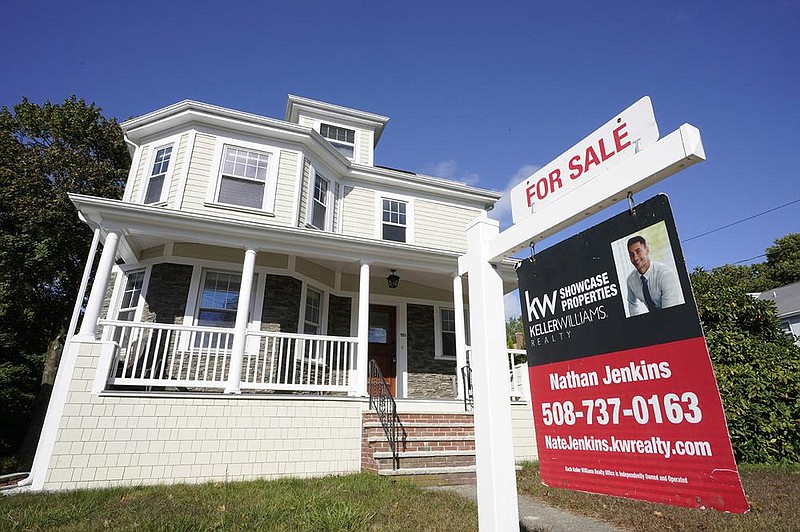The Federal Reserve has handed U.S. mortgage lenders their best year ever. Nobody knows that better than Shant Banosian, the industry's first billion-dollar salesman.
By his own count, the loan officer is personally set to originate a staggering $1.5 billion of home loans by year's end from his office outside Boston, a record in a year of records for the mortgage business.
Set alight by the Fed's low interest rates and bond purchases, the mortgage industry is on fire. Lenders this year are projected to originate $4.1 trillion of loans, eclipsing the 2003 high, thanks mostly to borrowers refinancing to reduce their house payments, according to Fannie Mae, the Federal National Mortgage Association.
With profit margins the widest on record, mortgage lenders are on a hiring spree and taking advantage of the pandemic housing boom to raise money from investors. At least nine have either gone public this year, such as Rocket Cos., or are planning to do so in coming months.
But like all booms, this one won't last forever. By next year, mortgage volumes could decline by a third as refinancings drop, according to a Fannie Mae forecast. Even if rates stay flat, the number of homeowners motivated to lock in savings will decline.
"Today's market is like riding a giant roller-coaster -- the higher it goes, the more dramatic the decline," said Jim Cameron, senior partner with Stratmor Group, a mortgage advisory firm in Greenwood Village, Colo. "You could argue, when you know the rates will eventually turn and you'll lay a bunch of people off, why hire? But quite frankly, the profits are there now."
For now, the industry is adding employees to handle all the business. Recruiters are in an all-out "firefight," Cameron said. Firms are offering signing bonuses to steal underwriters and processors from competitors or giving retention payments to keep them from leaving.
Lenders increased their head counts by 25% in July and 40% in August on an annualized basis, according to Bank of America researchers. Figures from the Bureau of Labor Statistics suggest there are now more than 100,000 mortgage brokers in the U.S., the first time it's cracked six figures since 2007.
Banosian, who runs a branch for Guaranteed Rate of Chicago, increased his staff by half to 40, just to keep up with the flood of applications from buyers upgrading to bigger suburban homes or saving a bundle by refinancing. Nationally, the company is advertising more than 400 open positions on its website.
"I presume rates will remain low next year," Banosian, 40, said in an interview, alone in his 4,000-square-foot office in Waltham, Mass., while his employees work remotely. "We're planning to staff up."
Last year, Banosian originated a record $916 million in mortgages, according to Scotsman Guide, which began producing its rankings in 2009. This year, he says he reached $1 billion in September. He expects to make 3,000 loans this year under his name, totaling at least $1.5 billion. And he plans to expand to other states.
Guild Holdings, which focuses on providing mortgages to homebuyers, sold shares to the public in October and wants to expand its business in Florida, the Northeast and across the center of the country, Guild Chief Executive Officer Mary Ann McGarry said in an interview. And the company is staffing up quickly.
United Wholesale Mortgage, the nation's largest lender for mortgages initially handled by brokers, now employs more than 7,000 people, up by about 40% from last year. NewDayUSA, a mortgage lender that focuses on veterans, has nearly doubled its workforce since March with plans to grow even more in the coming months, CEO and founder Rob Posner said in an interview.
BIG MARGINS
While mortgage rates have never been this low, they could be lower. Most loans are sold and then packaged into bonds. The Fed has bought more than $1.3 trillion in mortgage bonds since March, driving up prices and enabling lenders to sell their loans at a hefty premium. Lenders say that to avoid being overrun with business they've kept rates elevated, padding profits.
The average lender originated $1.34 billion of mortgages in the third quarter, up 33% from the previous three months and as much as a typical company would produce in a year, said Marina Walsh, vice president of industry analysis at the Mortgage Bankers Association. The profit-per-loan in the third quarter hit a record $5,535, up 22% from three months earlier, the Mortgage Bankers Association said Thursday.
DIFFERENT STORY
Next year may tell a different story, depending on the pandemic. A successfully deployed vaccine might bring back a semblance of normality to the economy. If employment recovers, that could push more people into the housing market. But if rates climb, even slightly, that could snuff out the refinancing boom.
"By any stretch it will be a good year," said Doug Duncan, chief economist at Fannie Mae."This year is just out of the park."
Fannie Mae, which projects borrowing costs to remain flat, said mortgage volumes for home purchases will grow by about 4% next year. That won't make up for an expected plunge in refinanced loans to $1.1 trillion next year from $2.6 trillion in 2020.
